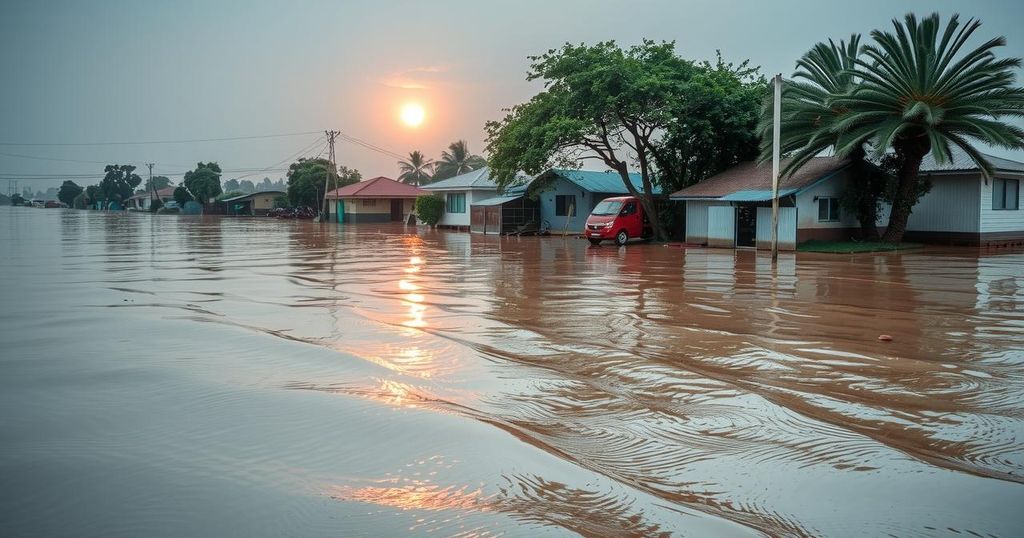A recent study indicates that extreme flooding in the Sahel is expected to increase due to intensified activity of African easterly waves (AEWs), influenced by climate change. The study highlights the relationship between AEWs and hydroclimatic patterns, emphasizing the importance of understanding these dynamics as global temperatures rise. This vital research indicates significant implications for both rainfall distribution and Saharan dust transport, affecting the region’s weather and future ecological stability.
Recent research indicates that extreme flooding events within the Sahel region are anticipated to intensify in frequency and severity due to a changing climate. This study, which explores the dynamics of African easterly waves (AEWs), highlights their crucial role in influencing regional hydroclimatic patterns. As global warming evolves, alterations in AEW activity could significantly affect the transport of Saharan dust, precipitation patterns, and consequently the occurrence of extreme weather events across northern Africa. This heightened wave activity, stemming from climate-related factors, necessitates a closer examination of their regional implications.
The Sahel region, encompassing countries such as Mali, Niger, and Chad, is often characterized by droughts, making it particularly vulnerable to shifts in climatic conditions. AEWs are critical atmospheric systems that facilitate precipitation, influence cyclonic activity, and transport Saharan dust. As global temperatures rise, understanding the interactions between these waves and climate variables becomes imperative to predicting future weather patterns and their impacts on the Sahel, a region already under ecological stress.
In conclusion, the study underscores the significant links between AEWs and increased flooding risks in the Sahel as global temperatures rise. The anticipated rise in AEW activity suggests that communities in this region may face heightened challenges associated with extreme weather events. Policymakers and scientists must collaborate to address these impending changes, implementing adaptive strategies to mitigate the potential impacts on this vulnerable region.
Original Source: www.downtoearth.org.in






